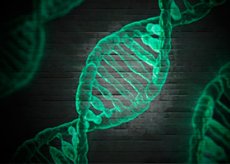DNA repair occurs on schedule
Last reviewed: 23.04.2024

All iLive content is medically reviewed or fact checked to ensure as much factual accuracy as possible.
We have strict sourcing guidelines and only link to reputable media sites, academic research institutions and, whenever possible, medically peer reviewed studies. Note that the numbers in parentheses ([1], [2], etc.) are clickable links to these studies.
If you feel that any of our content is inaccurate, out-of-date, or otherwise questionable, please select it and press Ctrl + Enter.

Enzyme substances that correct DNA damage more actively perform their function before sunrise and sunset.
It's no secret that biological clocks play an important role in the functionality of the human body. They determine the quality of our sleep, the strength of immunity, metabolism, the work of the heart, etc. Scientists also "looked" deeper and learned that even the basic molecular mechanisms are subject to the daily rhythm.
Dr. Aziz Sanjar with a group of scientists representing the University of North Carolina (Chapel Hill) pointed to the existence of a relationship between circadian rhythm and DNA repair. Dr. Sanjar is one of those scientists who was awarded the Nobel Prize in Chemistry in 2015: the prize was awarded for the analysis of molecular processes that occur when a cell corrects violations in DNA.
DNA is often subjected to mutations: the chains break, the genetic letters are replaced by incorrect ones. Therefore, it is very important that the recovery takes place not only qualitatively, but also regularly.
As scientists have discovered, the "repair" of DNA depends on daily activity. Thus, an experiment was carried out with Cisplatin, a platinum substance that, when combined with DNA, damages its structure.
Test guinea pigs received Cisplatin throughout the day. At the same time, specialists monitored which parts of the genome the repair system will correct for damage from the effects of Cisplatin. As a result, at least two thousand genes were obtained, in which the restoration took place in different diurnal periods.
At the time of synthesis of the RNA copy on the gene, double-stranded DNA is unraveled, and only one chain becomes a template for the synthesis of RNA. Such chains are subjected to "repair" only before sunrise or sunset, which depends on the specific gene. Another, untranscribed chain is "repaired" shortly before sunset, regardless of the gene. In the remaining time, recovery processes also take place, but they are much less active.
Most likely, the corresponding genes react to diurnal changes and pass into the active phase by the hour. Presumably, the stimulation of the restorative system depends on the mode of genes that are in the queue for "repair." However, additional information and additional experiments are required to accurately answer this question.
Now many experts note the most important practical role of the information received. It is no accident that scientists used in the experiments a drug that is included in the scheme of treatment of oncological pathologies.
Cisplatin destroys tumor cells, provoking in them the very damage to DNA, because of which cells lose the ability to develop and share. However, at the same time, healthy cells of the liver, kidneys, etc., are also damaged from the drug. Probably, scientists will be able to protect organs by applying Cisplatin depending on the daily rhythms of the DNA-repair system.
Detailed information on the study can be found on the PNAS pages (http://www.pnas.org/content/early/2018/05/01/1804493115).

 [
[